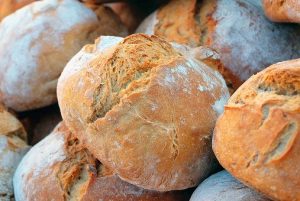The Taste of America
USA, December 1969
In the 1960s the American family likes to eat out, and its favorite is the ever-reliable restaurant chain Howard Johnson’s, with its big steaks and fries, cozy booths, warm atmosphere, and attentive staff.
Japanese steakhouses are attracting good customs on the West Coast. Wendy’s, a new fast-food chain specializing in hamburgers, has been doing good business.
At home, the stodgy pot roasts, fried chicken, and casseroles of the 1950s are on the way out, and people are experimenting with the pastry crusted BeefWellington and the thinly sliced, heavily sauced Steak Diane, flamed in the frying pan with a dash of brandy. Chicken Kiev (fried chicken breast filled with herbed butter) is a Saturday night treat, and people are gathering around the fondue pot to try this Swiss-inspired way of eating. The idea is to melt a mixture of 3 cheeses in the pot, and then to dip morsels of crusty bread, chicken, lamb, mushrooms, potato, etc. on skewers into the hot cheese! Another new idea is the smorgasbord, a tradition from Sweden, where all manner of cold meats, seafood, salads, and so on ae assembled on the sideboard, with the guests helping themselves and bringing their (usually heavily laden) plate to the table.
The New York Times Menu Cook Book suggests the following. For a small cocktail party, try Camembert amandine, cucumber spread, crackers and toast rounds, mushrooms strudels, cocktail croquettes. For a larger cocktail party, serve buttered nuts, chicken liver paté, mushroom-stuffed eggs, tuna-stuffed eggs, toast rounds and crackers, wild rice pancakes, cream cheese pastry turnovers.
New on today’s supermarket shelves are Coffee-Mate, Life cereal, Sprite, Po Tarts, Shake n’Bake, Doritos, Bac*Os, instant porridge, Gatorade, Pringles, and Tang, among many others.
and so it was, some of you remember!



